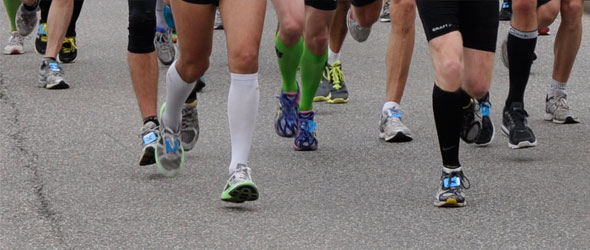 Article 3 of a technical discussion relating to the Stance Phase Dynamics and Pronation – Dr Regan Arendse MBChB, MSc Sports Medicine cum laude.
Article 3 of a technical discussion relating to the Stance Phase Dynamics and Pronation – Dr Regan Arendse MBChB, MSc Sports Medicine cum laude.
Continuing on from the the first two articles on Pronation and the mechanisms of running injuries. Introduction and Gait Cycle and Stance Phase Dynamics and Pronation
Now for Part 3
Mechanisms of Running Injuries and Excessive pronation
During excessive pronation the foot enters the loading phase of stance in a position that allows it to make contact with the medial aspect of the foot earlier than normal. Alternatively the foot may reach the position of medial contact of the foot with the running surface earlier than expected.
Finally it is speculated that the medial aspect of the foot remains in contact with the running surface for a period longer than that associated with a neutral foot. The consequence of excessive pronation is that two essential functions of the foot are not performed viz controlled adaptation of the foot to the running surface and effective transfer by the foot of the loading force to the running surface. The situation may be aggravated by a delay in the ability of the foot to revert to a rigid lever, thus increasing the likelihood that effective forward propulsion of the body may not be achieved. It is speculated that this may necessitate the runner to recruit force from other areas of the body to achieve forward propulsion and thereby increase the risk of injury in these areas of the body.
Injury to the knee joint as a result of excessive pronation is hypothesized to occur as a result of the following sequence of events. During normal pronation the talus is thought to act as a lever to cause a normal amount of internal rotation of the tibia (shin bone) during the stance phase. However, during excessive pronation, the tibia is thought to internally rotate beyond the normal range of movement. This in turn is thought to cause torsional stress at the knee and predispose the knee to injury. However, in a runner with an excessively long period of excessive pronation, the excessive internal rotation of the tibia is described to occur beyond the normal mid-stance phase and perhaps encroach on the propulsion phase. However, during the propulsion phase, the knee normally extends and has been described to cause an external rotation of the tibia. Therefore in the runner with excessive pronation the tibia is maintained in an internally rotated position at a point in the sequence of biomechanical events when it is necessary for it to be externally rotating. It is thought that this conflict of rotational motion of the tibia is likely to predispose to a variety of injuries to the anatomical structures below the knee.
The rational behind the use of sports shoes that have motion control features is that they will reduce the total amount of pronation in the foot during the loading phase and may also reduce the velocity of pronation of the foot. It is speculated that the shoes may also reduce the total period that the foot remains in the pronated position. By the same argument, the benefits of limiting excessive foot pronation may contribute to effective control of internal rotation of the tibia and thereby reduce counter-rotatory motion at the knee and lower leg. The anticipated effect of the prescription of motion control shoes is therefore to reduce the risk of running injuries associated with excessive pronation.
The challenge that faces most sports health professionals is to reach consensus on the anatomical factors implicated in the excessive pronation of the foot. It appear that the factors that are intrinsic to the foot may be effectively corrected with appropriate sports shoe prescription and the use of custom-made orthotics. Factors associated with pronation that are extrinsic to the foot and amenable to correction by conservative methods are usually soft-tissue in origin. It appears that rigid-skeletal factors that are associated with excessive pronation are not easily corrected by conservative methods and may in the extreme situation require orthopedic surgery.
Other articles in this section related to the Pronation and the mechanisms of running injuries:
* Introduction and Gait Cycle Part 1
* Stance phase dynamics and Pronation Part 2

Leave a Reply